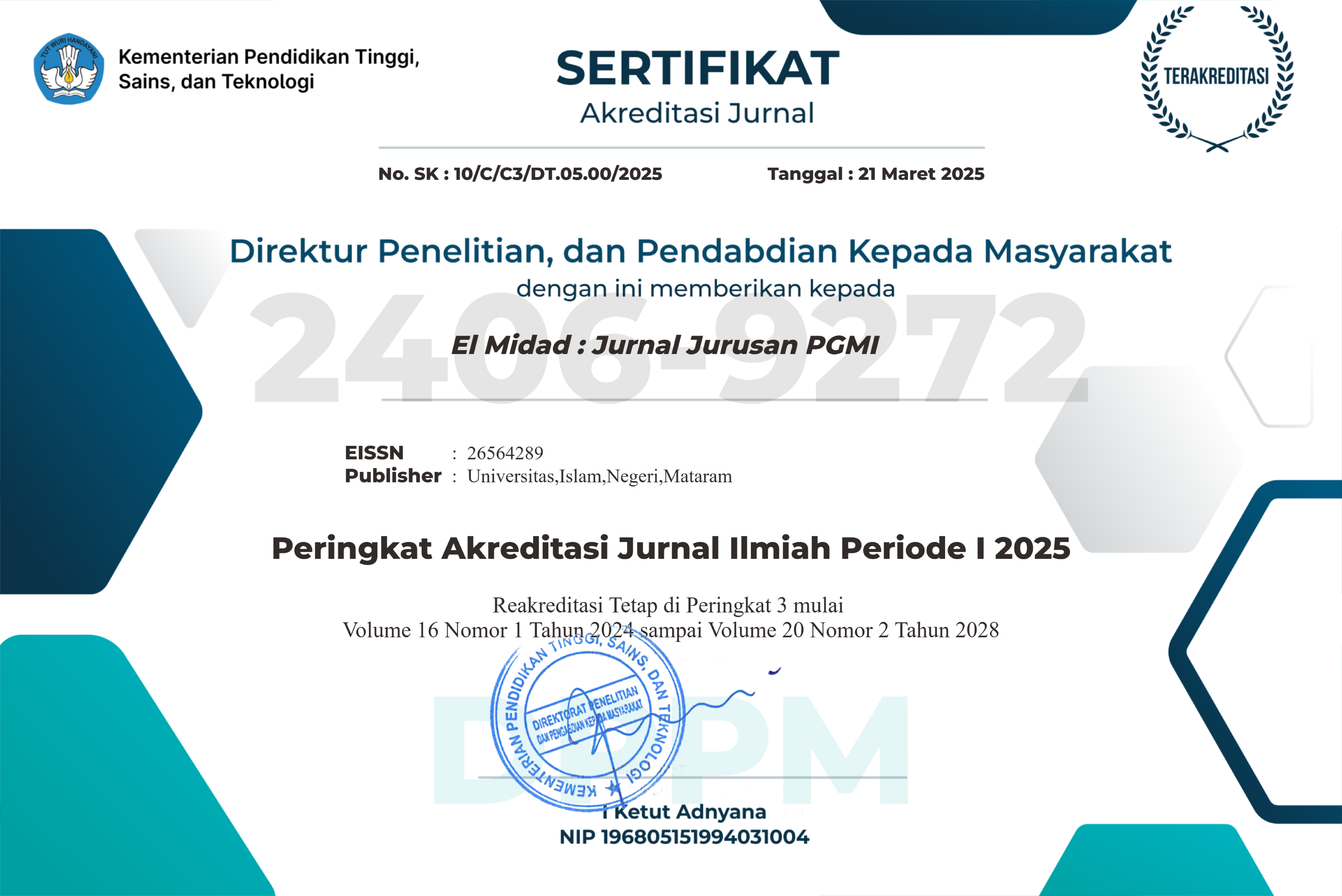NEUROSCIENCE-BASED LEARNING TO IMPROVE READING LITERACY OF SLOW LEARNER STUDENTS IN ELEMENTARY SCHOOL: A CASE STUDY
DOI:
https://doi.org/10.20414/elmidad.v17i2.13526Keywords:
Neuroscience, Reading Literacy, Slow Learner, Inclusive Education, Multisensory Learning.Abstract
This research aims to explore the effectiveness of neuroscience-based learning innovations in improving reading literacy of slow learner students in elementary schools through a case study at SDN 1 Perumnas Condongcatur. The method used is descriptive qualitative with data collection techniques in the form of observation, interviews, and documentation. The results showed that the multisensory approach that combines visual, auditory, and kinesthetic aspects succeeded in improving students' reading skills, both in terms of letter recognition, syllable combinations, and simple reading comprehension. The findings also indicate an increase in students' confidence and motivation to learn after the implementation of this learning model. Despite challenges such as limited facilities and differences in students' comprehension levels, these results reinforce previous literature stating that neuroscience-based approaches are able to maximize the neuroplasticity potential of children with special needs. This study recommends the importance of teacher training and provision of adequate facilities to optimize neuroscience-based learning outcomes in primary schools.
Downloads
Downloads
Published
Issue
Section
License
Copyright (c) 2025 Deana Indah Haimima, Unik Ambarwati, Fery Muhammad Firdaus, Muammar, Anisa Ilma Wardhani

This work is licensed under a Creative Commons Attribution-ShareAlike 4.0 International License.





